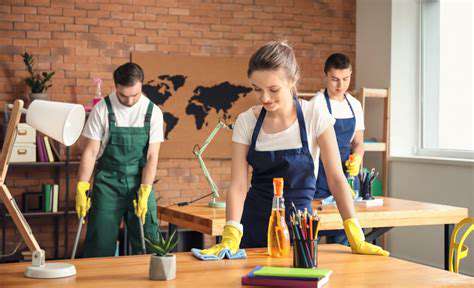How to care for and protect wooden furniture in high humidity areas
Understanding Relative Humidity
Relative humidity (RH) plays a critical role in wood preservation. This measurement compares actual water vapor in the air to the maximum possible at a given temperature. Since warmer air holds more moisture, temperature fluctuations directly impact RH levels. These changes can cause various wood problems, from warping and cracking to mold growth.
As a hygroscopic material, wood naturally adjusts to its environment by absorbing or releasing moisture. This characteristic makes stable RH levels essential for maintaining wood's structural integrity.
Ideal Humidity Ranges for Wood
While different wood types have varying tolerances, most perform best at 40-50% RH. This range minimizes risks of warping, cracking, and microbial growth. Lower humidity causes shrinkage and brittleness, while higher levels promote swelling and deterioration.
For valuable antiques or heirlooms, consult conservation specialists for precise humidity recommendations tailored to specific pieces.
Monitoring and Measuring Humidity
Regular humidity monitoring is fundamental for proper wood care. Hygrometers provide accurate RH measurements, allowing for timely environmental adjustments. These affordable devices offer valuable data for preventive maintenance.
Understanding your space's RH levels enables proactive measures to protect wood items from humidity-related damage. This approach helps preserve both aesthetic qualities and structural integrity.
Controlling Humidity with Dehumidifiers
In humid climates, dehumidifiers effectively regulate moisture levels. These devices extract excess air moisture, creating a more stable environment for wood storage. They're particularly valuable in basements, attics, and other high-humidity areas.
Selecting an appropriately sized unit is crucial—undersized models won't adequately control humidity, while oversized units waste energy and may cause other issues.
Controlling Humidity with Humidifiers (In Low Humidity Climates)
In dry regions, humidifiers add necessary moisture to prevent wood from drying and cracking. Strategic humidifier use protects furniture and other wooden items from low-humidity damage.
Maintaining Proper Ventilation
Good ventilation helps regulate humidity in wood storage areas. Proper airflow prevents moisture buildup and discourages mold growth. Simple measures like opening windows or using fans can effectively maintain optimal humidity levels.
Effective ventilation is a cost-efficient component of comprehensive wood care, complementing other humidity control methods.
Protecting Your Furniture from Direct Moisture Exposure

Protecting Upholstered Furniture
Upholstered furniture represents a substantial investment, often serving as room centerpieces. Proper care preserves both appearance and functionality. Regular maintenance significantly extends furniture lifespan while maintaining its visual appeal. Protecting these pieces from daily wear, spills, and stains is essential for preserving their value.
Consistent vacuuming and prompt spot cleaning prevent dirt accumulation and fabric damage. Always use cleaning methods appropriate for specific fabric types, and consult manufacturer guidelines before attempting any treatments.
Preventing Damage from Pets
While pets bring joy, they can also damage furniture. Regular grooming, supervised access, and protective covers help minimize risks from shedding and scratching.
Consider pet-friendly furniture protectors, especially in areas where animals frequently interact with furnishings.
Protecting from Spills and Stains
Accidental spills are inevitable in any home. Immediate response is crucial for preventing permanent stains. Blot spills gently with clean cloths, working outward to contain the spread. Avoid rubbing, which pushes liquids deeper into fabrics.
Always test cleaning solutions on inconspicuous areas first, and follow manufacturer recommendations for specific materials.
Protecting from Sun and Heat Damage
Prolonged sun exposure fades and weakens upholstery. Positioning furniture away from direct sunlight or using window treatments helps prevent damage. Strategic placement in shaded areas preserves color and material integrity. This is especially important for pieces near windows or in sunlit rooms.
Implementing these protective measures helps maintain furniture quality and appearance for years. Regular inspections and prompt attention to issues preserve both function and value.
Comprehensive design solutions streamline renovation processes, ensuring cohesive aesthetic results.
Regular Cleaning and Maintenance for Long-Term Protection

Regular Cleaning Practices
Maintaining cleanliness prevents dirt accumulation that can cause various problems. Regular cleaning creates more comfortable, healthier spaces. Visible dirt often indicates the need for more thorough cleaning procedures. Proper techniques reduce allergen and bacteria buildup, promoting better indoor environments.
Tailor cleaning frequency to area usage—high-traffic zones require more attention than less-used spaces. Effective cleaning combines appropriate products with proper methods for optimal results. This ranges from basic surface wiping to intensive deep cleaning, depending on need.
Maintenance of Equipment
Regular equipment maintenance ensures longevity and peak performance. This includes inspecting for wear, lubricating parts, and addressing malfunctions promptly. Proper care prevents expensive repairs and operational disruptions.
Regular filter and component checks maintain equipment efficiency and prevent failures. Well-maintained equipment also reduces accident risks, creating safer environments.
Preventive Measures
Proactive maintenance identifies potential issues before they escalate. Regular inspections detect hazards like spills or tripping risks. Early intervention minimizes problems and reduces repair costs.
This approach maintains safe, efficient environments while conserving resources long-term. Preventive strategies prove more cost-effective than reactive solutions.
Safety Considerations
Safety is paramount during cleaning and maintenance. Use appropriate PPE when handling chemicals or hazardous materials. Follow all safety protocols to prevent accidents.
Understand product hazards and store chemicals properly. Proper safety practices protect both people and property. Comprehensive training ensures all personnel follow correct procedures.
- Best wooden side tables for a compact living space
- Affordable ways to upgrade your home with wooden furniture
- How to make your wooden furniture last for generations
- How to choose the perfect wooden bed frame for your bedroom
- How to decorate your home with wooden furniture accents
- Why wooden furniture is the ultimate choice for a timeless home
- The best wood types for furniture that lasts
- How to use wooden furniture to add warmth to your bathroom décor
- How to pair wooden furniture with neutral colors for a calm vibe
- How to make your wooden furniture last longer with regular maintenance
- How to find wooden furniture that fits your space and style
- Best wooden furniture for creating a natural home atmosphere